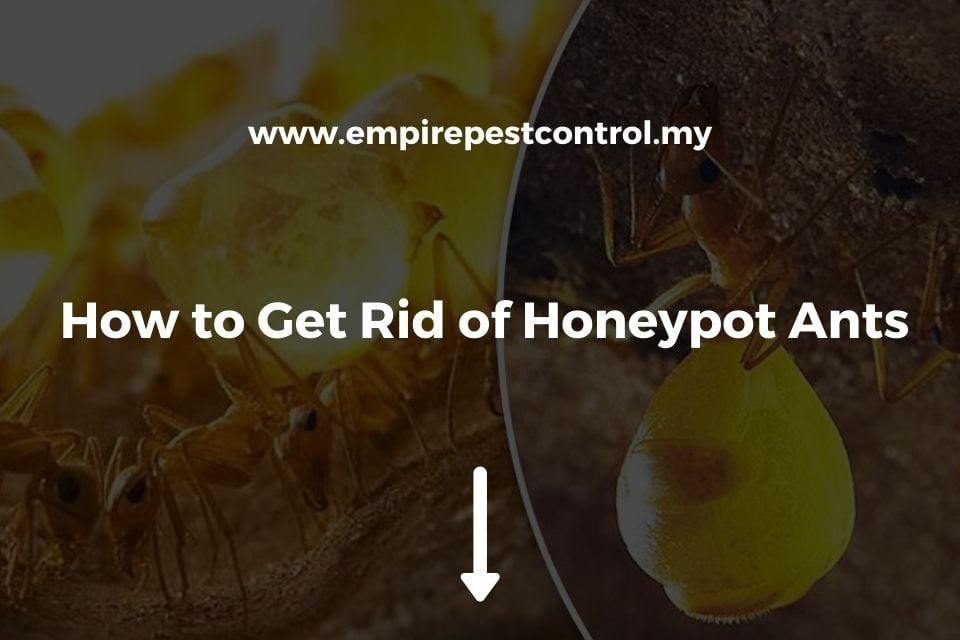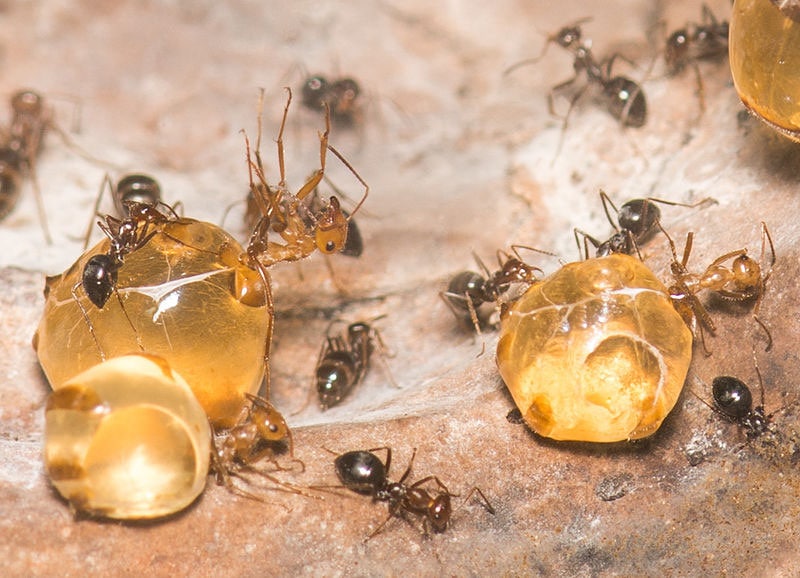Honeypot ants pose a significant nuisance for homeowners, being among the most troublesome pests. These insects establish colonies that burrow between one to four inches into the foundation of houses. They damage your property and produce a sticky substance that’s tough to clean up. This article from expert ant extermination professionals offers guidance on effectively eliminating these bothersome bugs for good!
Contents
What Are Honeypot Ants?
Honeypot ants get their name from the workers’ ability to become living storage containers.
These pests are able to expand their abdomens so much that they can store food for later use, especially in times of drought or famine.
They collect honeydew in these swollen abdomen tips, which is why they’re also called honey pot ants.
Do They Bite?
Honeypot ants are not aggressive, and they rarely sting. They often only bite when trying to remove debris in their colonies.
However, these ants can be a problem for any homeowner with an infestation of honeypot ants! Just like fire ants, honeypot ants will come out of the ground if your soil is wet or moist enough.
That’s why it’s important to dry up moisture around your home on regular basis-including watering plants outside!
Why Do Honeypot Ants Hang From the Ceiling?
Honeypot ants don’t really “hang” from the ceiling, but they do nest there! These pests are known to build colonies in homes and buildings.
They’re most likely to be found around areas with water damage or leaks because honeypot ants need moisture to survive.
If you see a trail of honeypot ants crawling up your wall or into your window sills, then that means their colony is inside your home’s walls!
Honey pot ant nests can grow so large and wide that it starts pushing through cracks and other openings in the foundation.
That’s why regular inspections by pest control professionals will help limit these problems before they get out of hand!
Do Honeypot Ants Burst?
While other ants do burst to help their colonies survive, honeypot ants do not.
If you see a honeypot ant crawling up your wall and its abdomen appears swollen, it’s likely because these pests can store food in their bodies for later use during times of famine or drought!
Honey ants that regurgitate food to other honey ants are called repletes. They’re different from honeypot ants because they’re only able to store food in their abdomens.
During a dry season where food is scarce, honey ants will release the stored food in their abdomens to help feed the rest of the colony.
How to Get Rid of Honey Ants
These pesky insects can be a real problem, but you don’t need to worry!
There are several methods that pest control professionals use for getting rid of honeypot ants.
First and foremost, the moisture problems around your home must be addressed in order to get rid of these pests once and for all.
You’ll also want to call your local pest control company if you see any trails or nests near windowsills and other areas where children and pets could come into contact with them!
Honeypot ants aren’t aggressive by nature, but they will sting when provoked. Children especially should not touch them because their venom is so potent it can cause anaphylactic shock in some people!
If left untreated, honeypot ant infestations can lead to serious damage in your home and even structural problems!
Regularly inspecting for honeypot ants by pest control professionals is the best way to stop them before they become a problem.
Wrapping It Up
It’s important to manage your home for honeypot ants because they can cause structural damage.
This blog post has given you information on honey ants and how you can get rid of them, protecting your home from infestation.
Let us know if you have more questions in mind by giving us a call today!


